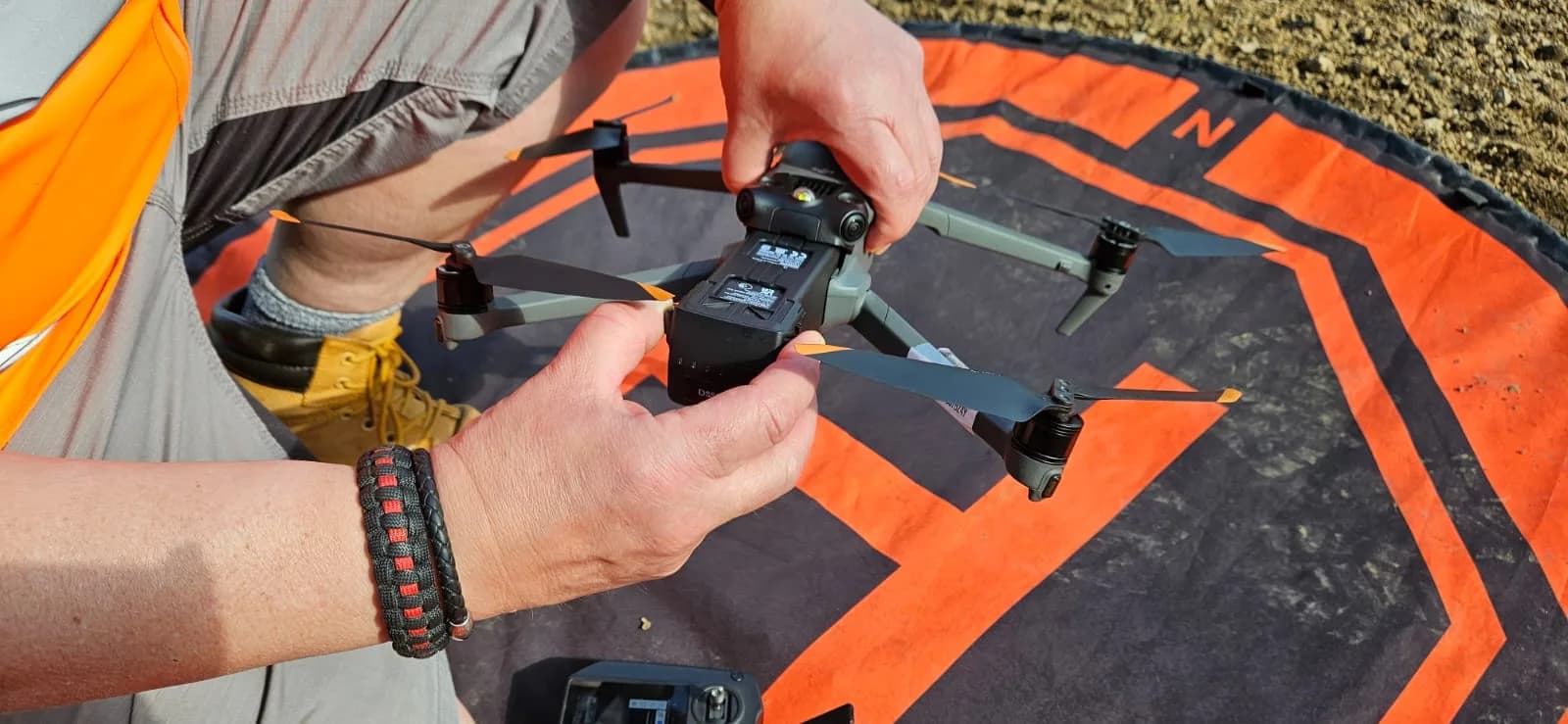
When you're piloting a drone in the UK, you'll need to follow the 1 to 1 rule—a fundamental safety principle.
This rule requires your horizontal distance from the drone to at least equal its altitude. This principle isn't arbitrary. It ensures you maintain a clear visual line of sight with your drone, which is crucial for monitoring its orientation and avoiding obstacles.
As a GVC-certified drone pilot, I can tell you this rule is second nature during professional operations. It's one of the first things drilled into you during your GVC training because it's non-negotiable for safe flying.
While it might seem limiting, understanding when this rule applies—and the rare circumstances when you can fly beyond it—could expand your drone operation possibilities.
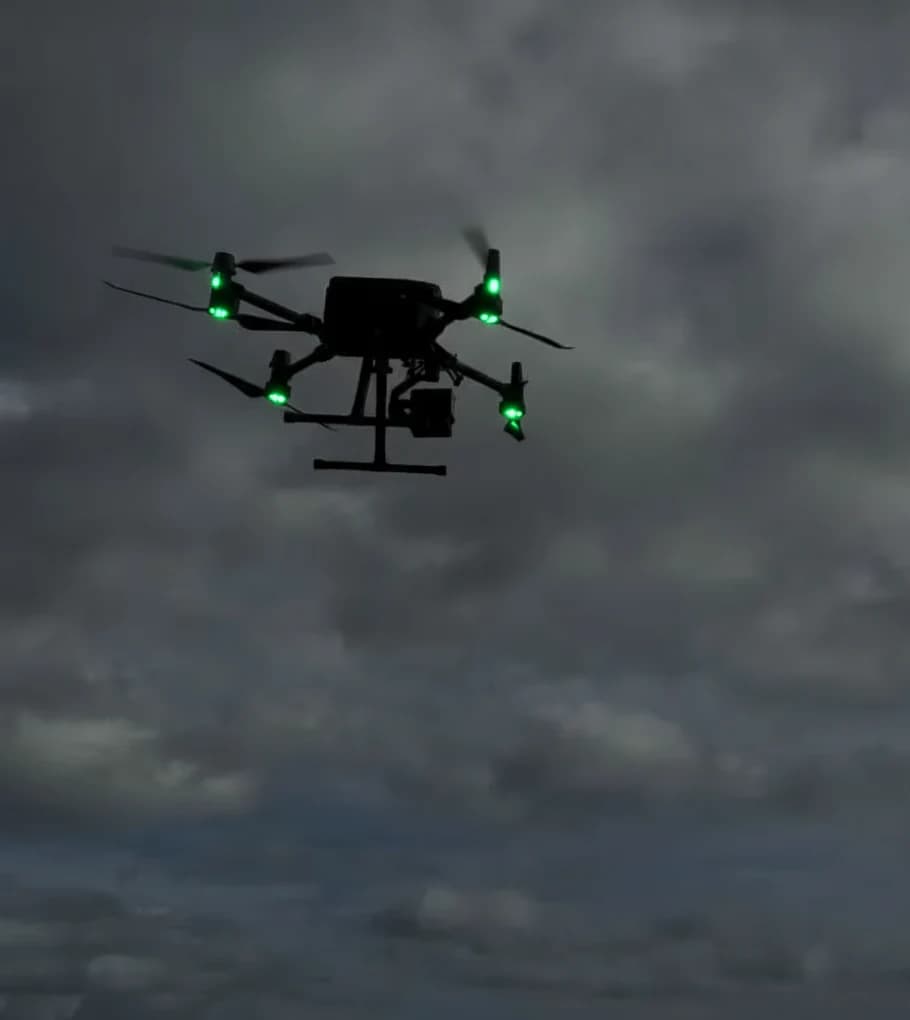
30 Second Summary
- The 1:1 rule requires keeping horizontal distance from a drone equal to or greater than its height above ground
- This rule creates an invisible cone around people, preventing drones from flying directly overhead
- It maintains safe visual line-of-sight, as visibility naturally decreases with altitude
- The rule applies to recreational users and most commercial operations under UK CAA regulations
- Certain operations can receive exemptions through approved safety cases, risk assessments, and enhanced qualifications
The 1:1 rule means your drone’s horizontal distance from you must equal or exceed its height
The 1:1 rule boils down to a straightforward spatial relationship between your drone and yourself. It requires that your drone's horizontal distance from you must always be greater than or equal to its altitude.
For example, if you're flying at the maximum drone height limits of 400 feet, you must maintain at least 400 feet of horizontal separation from your position on the ground.
This guideline is an essential safety measure. It prevents you from flying directly overhead of yourself or others, maintaining safe distance from people. When your drone maintains this distance ratio, you'll have better visibility and control, reducing the risk of accidents if mechanical failures, like a propeller not spinning, were to occur.
In practice, you develop a 'feel' for this distance over time, but I never rely on that alone. My eyes are constantly flicking between the drone in the sky and the telemetry data on my controller to ensure I'm compliant.
Many drone pilots visualize this as an invisible cone extending upward from their position. This creates a no-fly zone that helps maintain safe operations while still allowing for creative aerial photography and aerial videography.
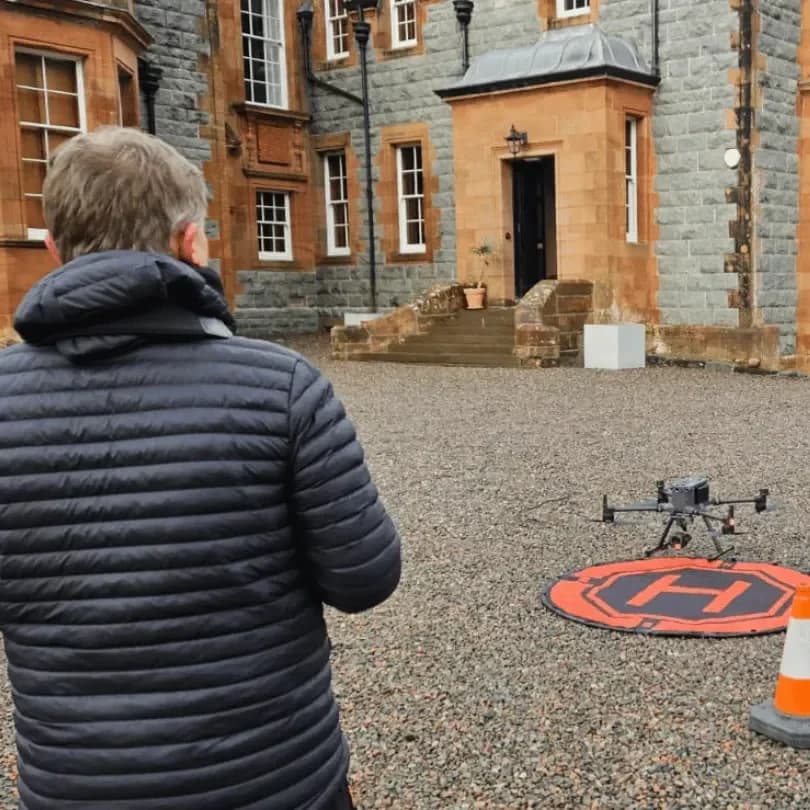
1:1 Rule Examples
Drone Altitude (Height) | Minimum Horizontal Distance from Operator |
|---|---|
50 feet (approx. 15m) | 50 feet (approx. 15m) |
100 feet (approx. 30m) | 100 feet (approx. 30m) |
250 feet (approx. 75m) | 250 feet (approx. 75m) |
400 feet (approx. 120m) | 400 feet (approx. 120m) |
The rule exists to maintain safe visual contact with your drone
Safety and visibility go hand-in-hand when operating your drone. In my experience, maintaining a visual line of sight becomes increasingly difficult as your drone flies higher. At steep angles, your drone appears smaller and is harder to track against the sky.
When you follow this rule, you'll keep your drone at angles where you can effectively monitor its position, orientation, and surrounding obstacles. I remember a time when I was flying near some tall trees. Because I was adhering to the 1:1 rule, I had a much better perspective on my drone's proximity to the branches. If it had been directly overhead, my depth perception would have been completely off, and I could have easily clipped a branch.
The rule also helps you detect potential mechanical issues or erratic flight behavior early, giving you time to react. I've found that noticing a slight, uncommanded drone tilting is much easier when it's not directly above me.
Remember that losing sight of your drone, even momentarily, dramatically increases accident risk. By adhering to the 1:1 rule, you're prioritizing responsible operation while maintaining the control necessary for safe flight.
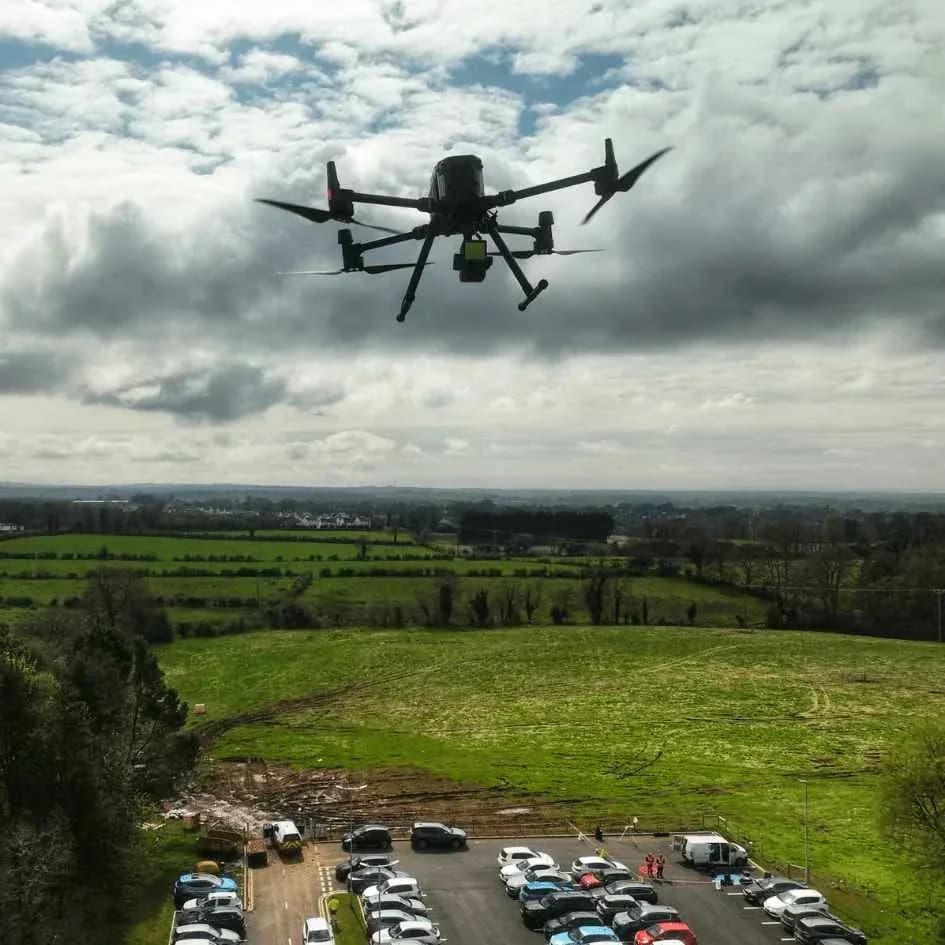
It effectively limits how far and high you can fly without losing sight
This creates a practical boundary for your flights. If you're standing 200 feet away from your drone horizontally, you shouldn't fly higher than 200 feet vertically to maintain proper visual contact.
This is a real-world consideration on jobs. For instance, to get a sweeping aerial shot of a large country estate for a drone real estate photography client, I often have to plan my take-off position carefully, sometimes walking a significant distance away to legally gain the altitude needed for the shot.
This limitation becomes particularly important in challenging weather, like when you're flying in wind. As your drone gets smaller in your field of vision, it's harder to detect obstacles, maintain orientation, and respond to potential hazards.
The 1:1 rule helps prevent the dangerous situation where your drone becomes just a tiny speck in the sky. It ensures you can still see crucial details like the drone's orientation, direction, and surroundings.
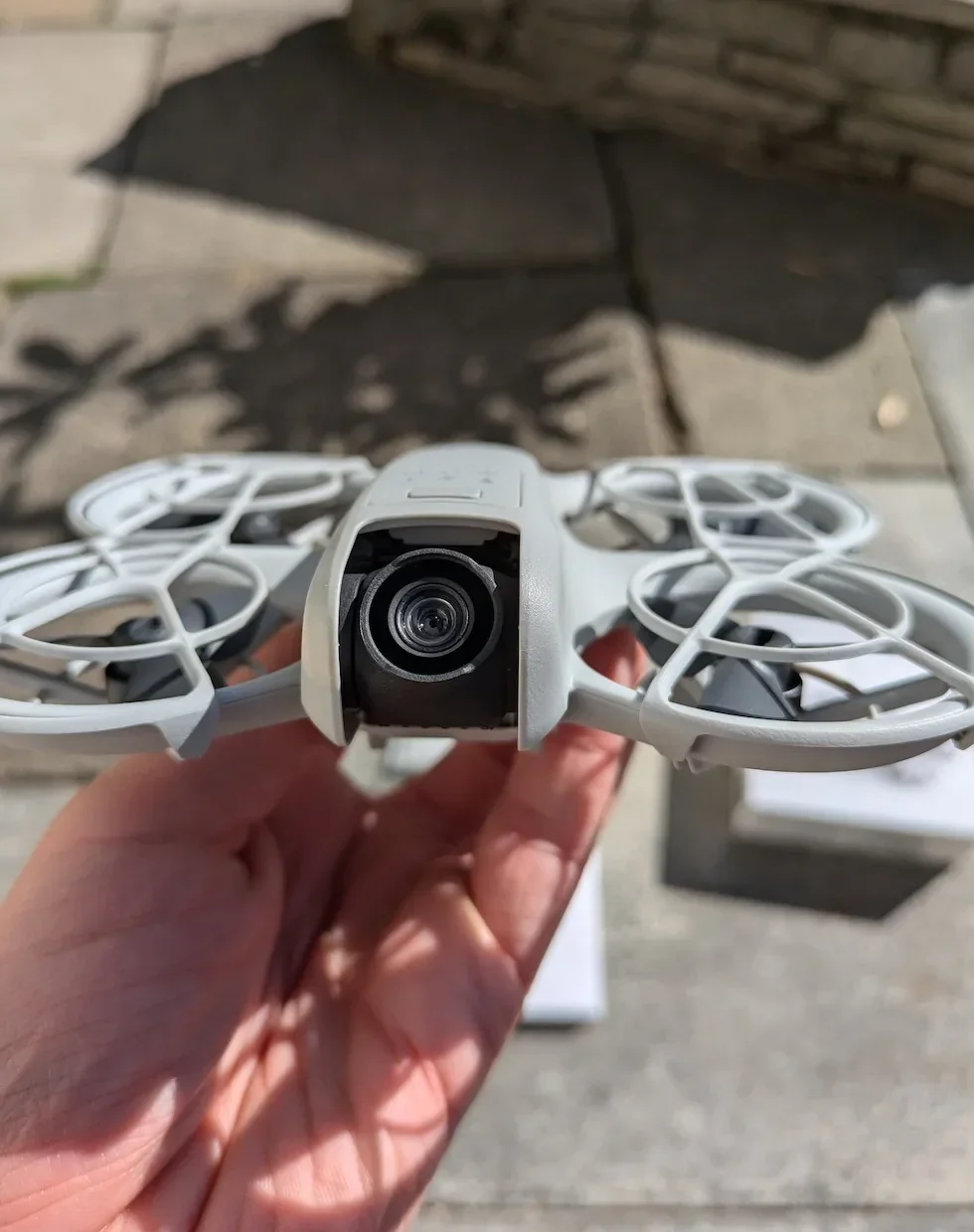
Practical Tips for Maintaining the 1:1 Rule
Beyond just watching the telemetry, there are a few field-tested habits I rely on to stay compliant.
A quick trick I use is the 'angle of view' check. If I find myself craning my neck to look straight up, I know I'm breaking the rule or getting very close to it. Your drone should always be at a comfortable angle in front of you, allowing you to easily perceive its orientation and movement.
Before taking off, I often use a rangefinder or even just pace out a known distance on the ground. I'll pick out a landmark—a tree, a fence post—at that distance. This gives me a real-world visual cue during the flight, so I'm not just relying on the numbers on my controller.
Planning is also key, especially for complex jobs. For any drone topographical survey, I use satellite mapping tools during my pre-flight planning. The measurement tools allow me to precisely map out my take-off and landing zones to ensure I can maintain the 1:1 rule throughout the entire operation.
Finally, on a professional job, I always make a point to explain the 1:1 rule to my client. By showing them where I need to stand to achieve a certain altitude safely, it manages their expectations and demonstrates a commitment to safe, legal operations from the start.
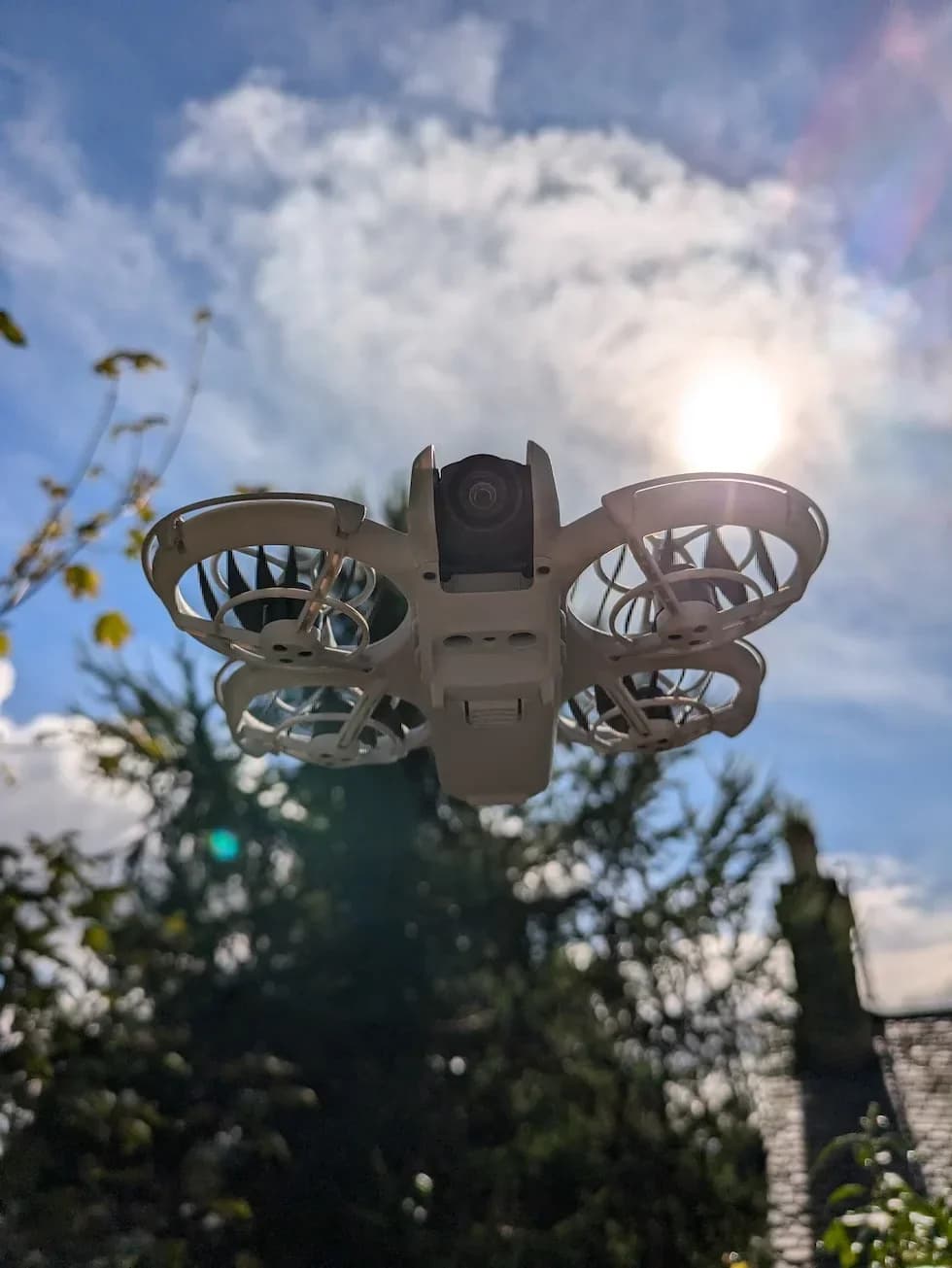
Recreational and most commercial pilots must follow the 1:1 rule in the UK
In the United Kingdom, both recreational drone enthusiasts and most commercial drone operators must adhere to the 1:1 rule. This is a core part of the Civil Aviation Authority's (CAA) regulations.
It’s a frequent point of discussion with clients who might ask for a shot looking straight down from a great height. Part of being a professional is explaining these rules and finding a creative, legal alternative to achieve their vision.
This rule applies across all categories of operations unless you've secured specific permissions that exempt you from standard limitations.
If you're flying in the Open A1 or A2 categories, you'll need to maintain this visual line of sight ratio throughout your flight. The CAA enforces this rule to ensure safe operation in UK airspace, particularly in areas where other aircraft might be present.
Even with a PfCO (Permission for Commercial Operations) or GVC (General Visual Line of Sight Certificate), you're still bound by the 1:1 rule unless your operational authorisation specifically grants extended visual line-of-sight privileges.
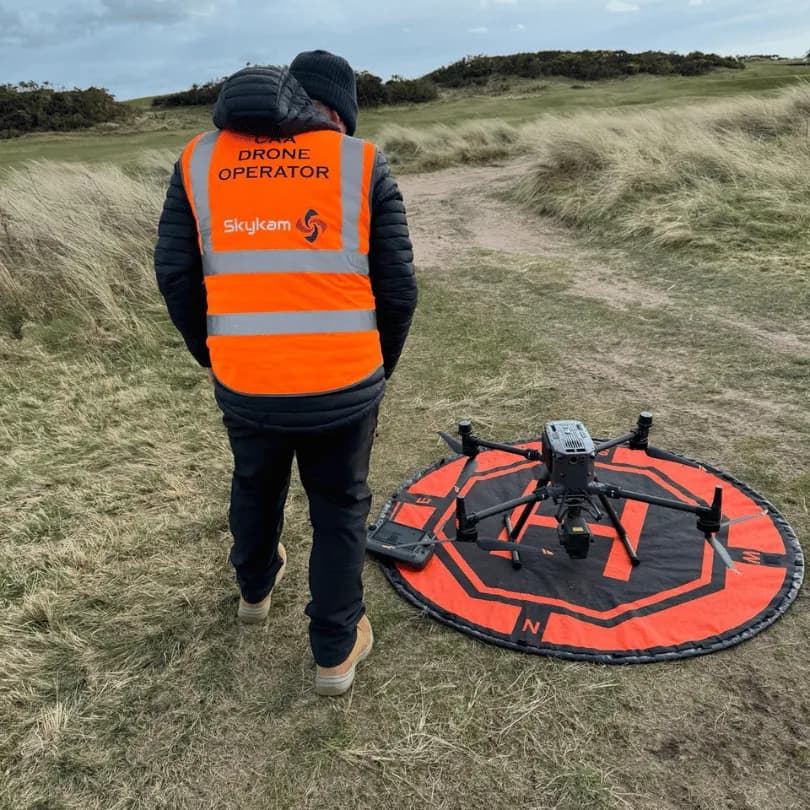
Certain certified drone operations may be exempt from the 1:1 rule
While most drone operators must follow the 1:1 rule, certain certified operations can receive exemptions. These authorisations are for professional drone services with specific operational safety cases approved by the CAA.
To qualify for an exemption, you'll need to demonstrate comprehensive risk assessment protocols, enhanced pilot qualifications, and possibly specialised equipment.
From experience, I can tell you that the CAA scrutinises these applications intensely. Gaining an exemption isn't a loophole; it's a testament to an operator's incredibly robust safety procedures and is reserved for situations where the standard rules are genuinely unworkable.
Organisations conducting critical drone roof inspection work, emergency services, and film production companies often secure these permissions.
The application process requires detailed documentation of your safety management system and operational procedures. You'll also need to show why your mission can't be accomplished within standard restrictions. If approved, you'll receive an Operational Authorisation with specific conditions tailored to your operation's risk profile.
Frequently Asked Questions
Does the 1:1 Rule Apply in Countries Other Than the UK?
Yes, the 1:1 rule, or a similar principle, applies in several countries beyond the UK. You'll find similar regulations in Australia, Canada, and parts of the European Union. However, implementation varies, so always check local aviation authorities before flying your drone abroad.
How Can I Measure My Drone's Horizontal Distance Accurately?
You can measure your drone's horizontal distance accurately using your drone's companion app, which displays real-time telemetry data. Many modern controllers also show distance readings. As a professional habit, I always call out my height and distance before any major manoeuvre, using the data from my controller. It keeps me focused on the rules when carrying out complex drone surveys.
Are There Specific Weather Conditions That Affect the 1:1 Rule?
Yes, weather conditions significantly affect the 1:1 rule. Strong winds make maintaining proper distance harder. I was filming over the Tay here in Dundee once when a sea fog rolled in much faster than forecast. My visibility dropped in seconds, making it impossible to apply the rule, and I had to bring the drone back immediately. Poor visibility from fog or when flying in rain reduces your ability to accurately gauge distances. Extreme temperatures can also impact battery life.
What Penalties Exist for Violating the 1:1 Rule in the UK?
Violating the 1:1 rule in the UK can result in serious penalties from the CAA under the Air Navigation Order 2016. Penalties can include significant fines, the revocation of your authorisations, or even criminal prosecution for serious breaches. It's also a condition of your drone insurance requirements.
Does the 1:1 Rule Apply to Indoor Drone Flights?
No, the 1:1 rule doesn't apply to indoor drone flights. When you're flying your drone inside a building, you're not in navigable airspace regulated by the CAA. However, you should still follow general safety practices, especially for services like a confined space inspection.
Conclusion
When you're flying your drone, remember the 1:1 rule: keep the horizontal distance at least equal to its height.
This simple habit helps you maintain visual contact and control, preventing accidents. Sticking to it protects you, your drone, and the public.
It's not just good practice—it's required for recreational and most commercial flying in the UK.
While some certified professional drone operations may get exemptions, for most drone pilots, this rule is essential for safe, legal drone operation.
About the Author

Written by
Peter Leslie
Peter Leslie is a CAA-approved commercial drone pilot with 10+ years experience and over 10,000 flight hours. He holds the GVC and A2 CofC drone licences with full CAA Operational Authorisation. Peter is a member of ARPAS-UK, the UK's non-profit trade association for the drone industry. He founded HireDronePilot to connect UK businesses with qualified, insured drone operators.
Looking for More Drone Work?
Join the UK's leading network of professional drone pilots and grow your business.
Open Access
Bid on any job - all jobs open to all pilots
Grow Revenue
Access high-value commercial projects
Stay Busy
Fill your schedule with regular work
Related Articles

Our Drone Survey Service In Stirling, Scotland
Bringing you Stirling drone survey data from areas no one else can fly.

How Much Does A Drone LiDAR Survey Cost
Forecasting your drone LiDAR survey cost requires understanding what's hidden beyond the initial quote.

Step By Step Process Of Drone LiDAR Survey
Next, discover the crucial post-flight steps that determine your survey's success.
